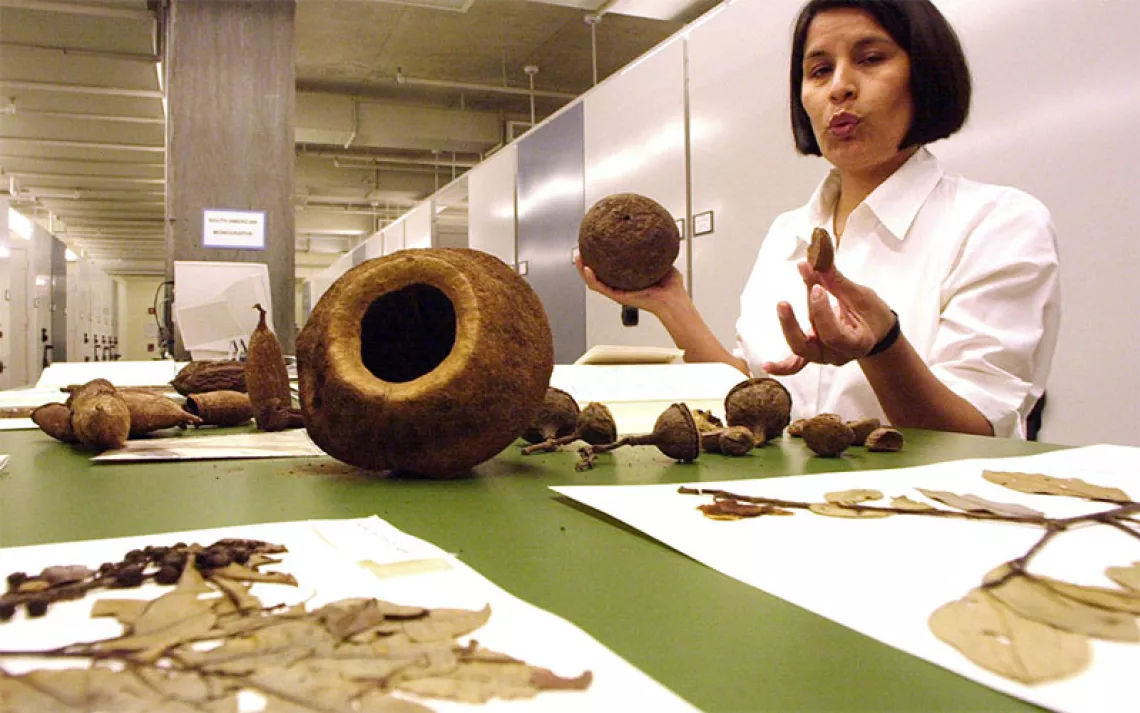Power for the Poor From Animal Manure, Food Waste
Biogas digesters' hat trick: fueling stoves, cleaning the air, disposing of waste
Adapted from an interview with Yair Teller by Anat Mooreville.
My company is based in Netanya, Israel. We produce backyard biodigester units—available as easy-to-assemble kits—that recycle organic waste into cooking gas and fertilizer.
I live in Adama, an off-grid community in the western Galilee. I first studied renewable energy when I was in university. After two years, I asked myself, "What will I do with my studies?" I decided I would travel in India to find out. One day in South India, I climbed up a very high mountain, and there I met a local Indian family who had a coffee and cardamom plantation. They invited me into their house for a tea, and I saw that the kitchen was smokeless.
I was amazed. It was the first time in India that I saw a kitchen where they didn't cook on charcoal, wood, or dry cow dung. I asked, "Where does this gas come from?" They took me to their little cowshed: In the morning they would wash all of the cow manure into an underground domelike cement structure, and from there a pipe went to the kitchen stove. It was built as part of an initiative on behalf of the Indian government.
This system broke up the cow manure through anaerobic fermentation and produced biogas—natural methane—and liquid fertilizer. They used the really rich fertilizer to grow the vegetables and flowers that they sold in the local market on weekends. The biogas system gave them revenue; they didn't have the indoor pollution that kills millions of women and children a year; and they preserved clean water by stopping the cow manure from entering the watershed. I knew this was what I wanted to do with my life.
I took some courses in Mexico to learn how to build biogas systems. I traveled in the mountains of Oaxaca in 2008 and 2009 to teach villagers how to build the systems with local materials. After a while, I decided there are issues in my own country. This is how I got to the Arava Institute for Environmental Studies at Kibbutz Ketura, where I managed USAID-funded biogas and waste-recycling systems with Bedouins in the desert. The Bedouin community lives in very harsh conditions. They have a lot of goat and sheep manure that they burn. I also built biogas systems in the Palestinian West Bank with the Arava Institute.
After building systems in a few different places around the world, I noticed a few things. First, it's not easy to spread this technology because most biogas systems are made from cement. You can't ship it around. I understood that if we want to promote biogas, it has to work like a solar panel—fast to set up, easy to ship—and be a good-looking product. Then people living in rural areas will be happy to pay for it. Second, most systems are for animal manure, mostly pigs and cows. But in urban slums in India and Africa, there's a lot of food waste thrown into the streets that could be used.
The last point was actually inspired by my grandmother, who was 100 years old. I was explaining to her what I was doing around the world, and she said, "Do you have a biogas system in your house?" And the answer was no, because I was then living in a modern environment and did not have any animals. But what my grandmother was actually telling me was "walk your talk": If you have one in your house, then you can go preach about it to the rest of the world.
So now I have a unit of my own. The idea of my company was to generate a system that will look good, be easy to build, and work well, and can also work in developed areas. In the last six years we developed a smaller system than what was available on the market. The kit is easy to ship and uses food scraps and any organic waste. Today we are selling all around the world, including in the USA.
Our next project is to connect our system to eco-flushing and efficient toilets that can be used off the water grid. I already have one in my house, and my children use it—they don't even have the concept that organic waste can be discarded without being reused. This is our vision for the rest of the world. Every HomeBiogas system saves six tons of greenhouse gases a year, which is about equal to the CO2 footprint of a car. We believe that a biogas system is an accessory that needs to be in every house. We believe that this is the future.
This article appeared in the January/February 2018 edition with the headline "Biogas Evangelist."
 The Magazine of The Sierra Club
The Magazine of The Sierra Club



